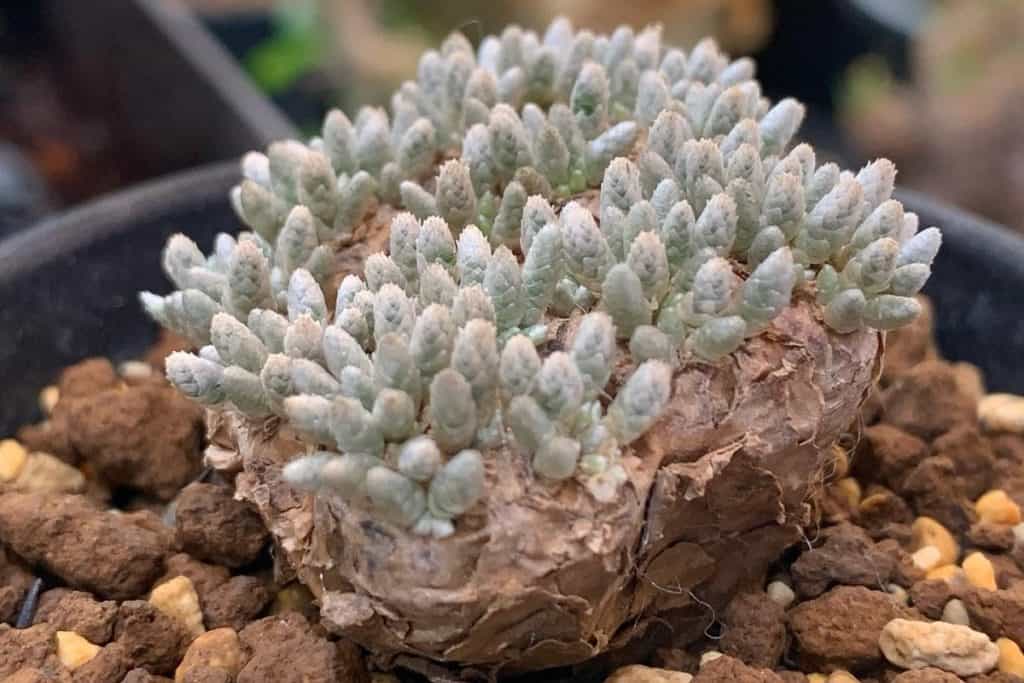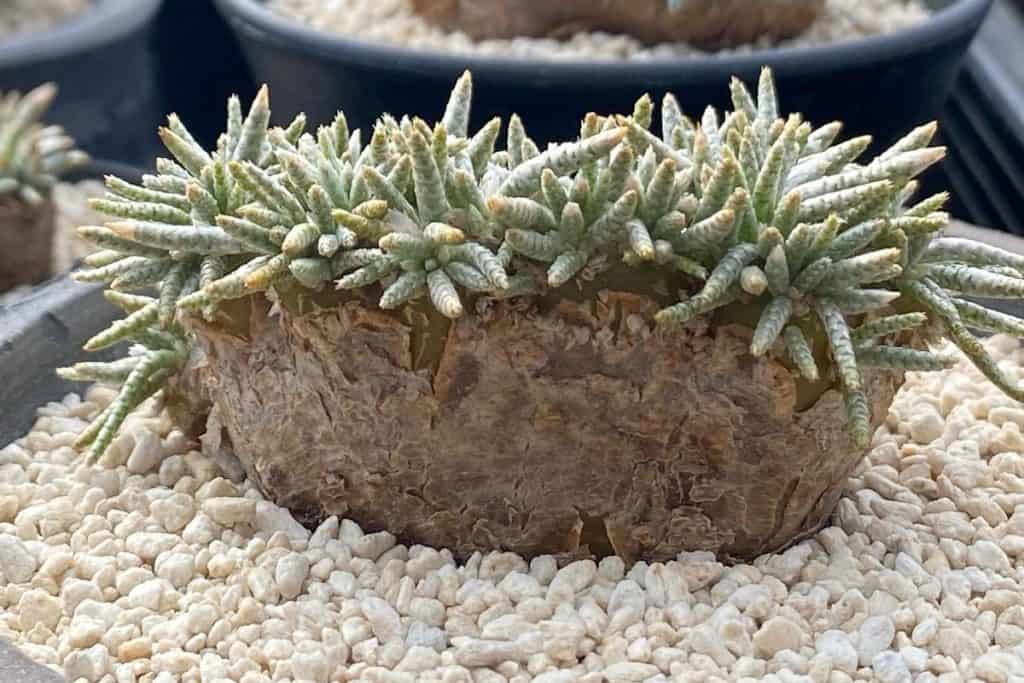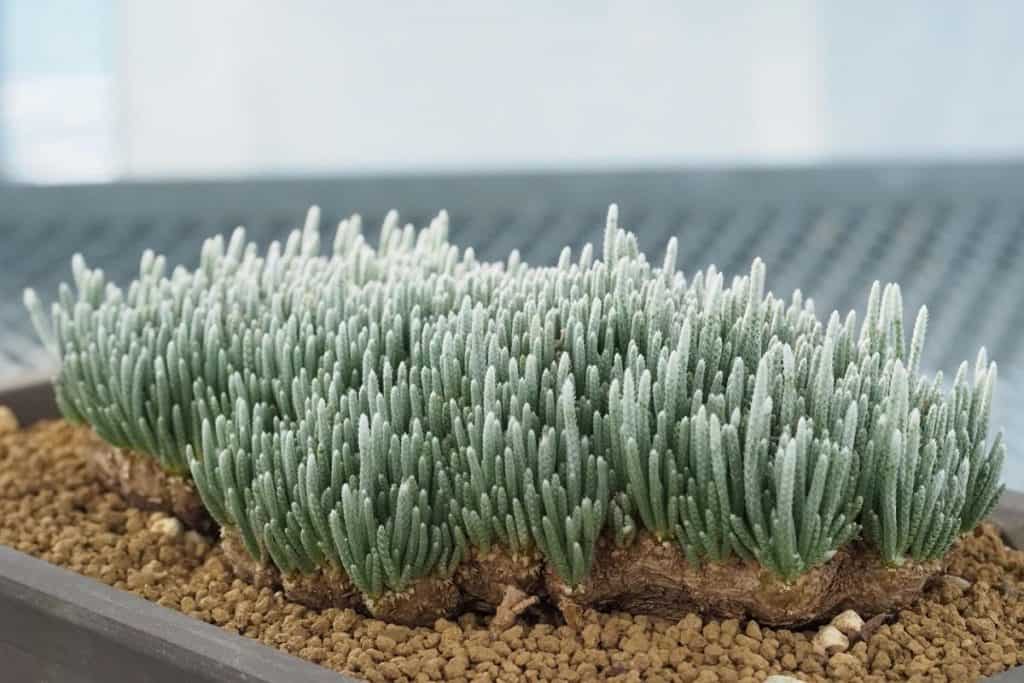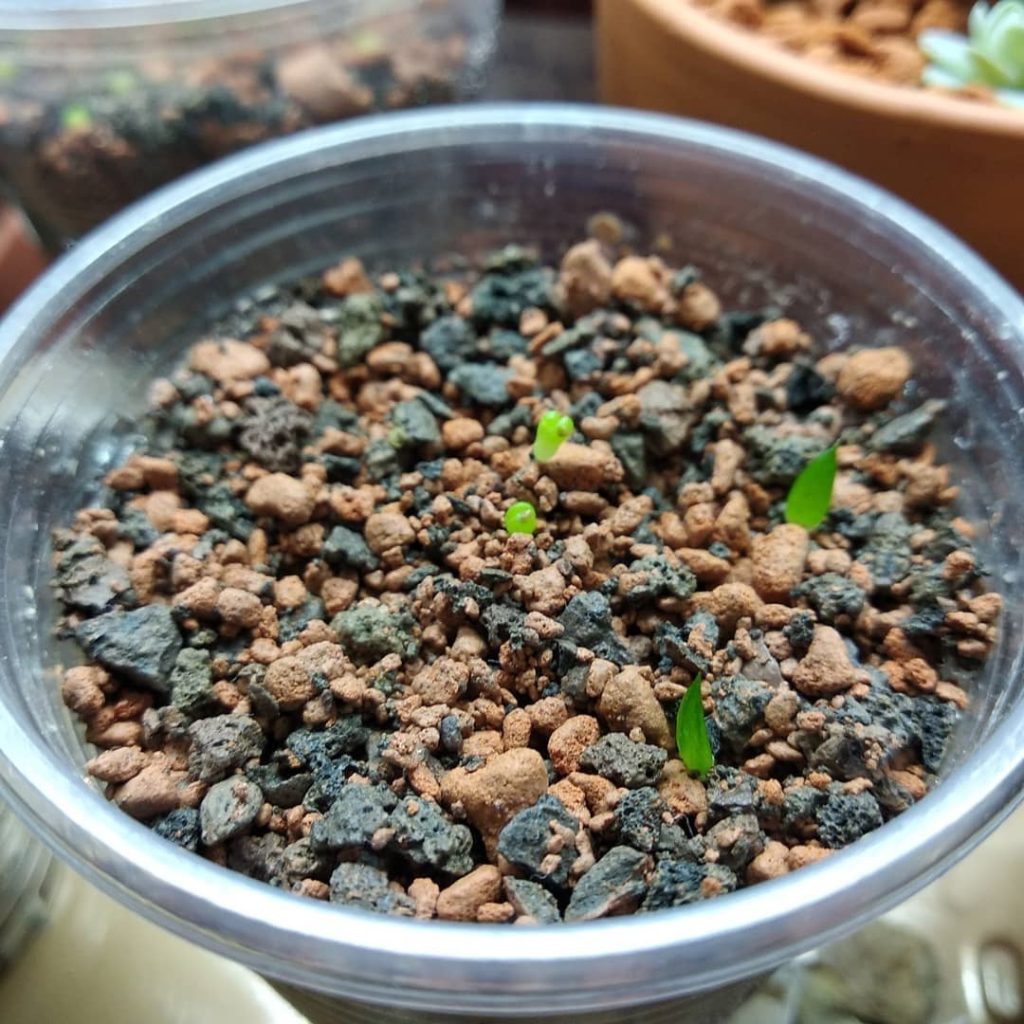Avonia alstonii: Characteristics and Care
Have you ever laid eyes on a plant so otherworldly, you had to do a double-take? Get ready to meet Avonia alstonii, the mesmerizing succulent that will make your jaw drop. With its plump, silver-green stems adorned with delicate white blooms, this quirky plant looks like it was plucked straight from the set of a sci-fi movie. But Avonia is very much real and ready to be the star of your indoor garden! Keep reading to uncover the out-of-this-world secrets of this must-have botanical marvel.

Contents
About Avonia alstonii
Native to the arid regions of South Africa like Namaqualand and the Cape Province, Avonia alstonii is a member of the Portulacaceae family. At its base sits a large rootstock from which radiate numerous thick, bluish-green stems covered in a silvery bloom. In spring and summer, these unusual stems produce a smattering of dainty white flowers. Maximum stem length is around 8 inches.
Related Post:
1,000 Types of Succulents With Pictures
How to Care for Avonia alstonii
Light
Avonia alstonii thrives in bright, direct sunlight and can easily handle the intense afternoon rays, making it perfect for sunny porches or south-facing windows. For indoor growing, situate near a sunny window or use a grow light within 6-12 inches of the plant for 12-14 hours per day.
Water
From March to October, water thoroughly but infrequently, allowing the fast-draining soil to fully dry before watering again (about once every 1-2 weeks). Reduce watering in winter when growth is minimal. Underwatering is preferable to overwatering for this low moisture-needs plant.
Soil
Avonia alstonii needs a very well-draining potting mix. Use a standard cactus/succulent mix amended with materials like pumice, perlite, sand or small pebbles to increase drainage and aeration. Aim for a nearly neutral soil pH.

Fertilizer
Feed once at the beginning of the growing season with a balanced fertilizer formulated for cacti/succulents or use a weaker general-purpose fertilizer diluted by half.
Temperature
This drought-tolerant plant loves heat and can be grown year-round outdoors in USDA zones 10-12. It can withstand light frost but will need protection if temperatures dip below freezing for extended periods.
Potential Issues
The main threat is root rot from soggy soil and poor drainage. Pests like mealybugs or scale are rarely problematic. Use fungicides or repot in fresh soil if rot occurs.

Pruning
Very little pruning is required due to the plant’s slow growth habit and lack of leaves. Simply pinch off any dried or rotting stem segments as needed.
Potting and Repotting
Plant Avonia alstonii in a well-draining pot with a drainage hole, using a container just slightly larger than the rootball. Terra cotta is an ideal breathable material. Repot every 2-3 years.
Propagating Avonia alstonii

While possible from seed, propagating Avonia alstonii from offsets or cuttings is easier and more reliable:
- Take 4-6 inch offsets from a mature plant’s base. Allow cut ends to callous over for several days.
- Optionally, dip callused ends in rooting hormone powder.
- Plant offsets vertically in well-draining cactus/succulent potting mix with just the top inch exposed.
- Place in a warm, bright spot but avoid direct sun at first to prevent transplant shock.
- Water sparingly until new root growth appears in 2-4 weeks.
- Gradually increase light levels and begin standard watering routine.
